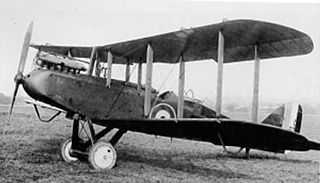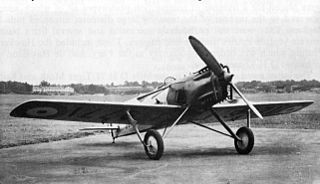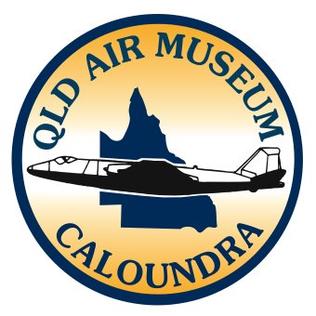
The de Havilland DH.98 Mosquito is a British twin-engine shoulder-winged multi-role combat aircraft, introduced during the Second World War, unusual in that its frame is constructed mostly of wood. It was nicknamed The Wooden Wonder, or "Mossie". Lord Beaverbrook, Minister of Aircraft Production, nicknamed it "Freeman's Folly", alluding to Air Chief Marshal Sir Wilfred Freeman, who defended Geoffrey de Havilland and his design concept against orders to scrap the project. In 1941 it was one of the fastest operational aircraft in the world.
The Aircraft Manufacturing Company Limited (Airco) was a British aircraft manufacturer operating from 1912 to 1920. Airco produced thousands of aircraft for the British military during the First World War, most of which were designed by their chief designer, Geoffrey de Havilland. Advertised in 1918 as the largest aircraft company in the world, Airco established the first airline in the United Kingdom, Aircraft Transport and Travel Limited, as a subsidiary. A glut of war surplus aircraft and a lack of government interest in aviation caused the company to become unprofitable, and in 1920 it was sold to Birmingham Small Arms Company, who had its operations liquidated later that year.

The de Havilland Aircraft Company Limited was a British aviation manufacturer established in late 1920 by Geoffrey de Havilland at Stag Lane Aerodrome Edgware on the outskirts of north London. Operations were later moved to Hatfield in Hertfordshire.

The de Havilland Vampire is a British jet fighter developed and manufactured by the de Havilland Aircraft Company. It was the second jet fighter to be operated by the RAF, after the Gloster Meteor, and the first to be powered by a single jet engine.

The de Havilland DH.82 Tiger Moth is a 1930s British biplane designed by Geoffrey de Havilland and built by the de Havilland Aircraft Company. It was operated by the Royal Air Force (RAF) and many other operators as a primary trainer aircraft. In addition to the type's principal use for ab-initio training, the Second World War saw RAF Tiger Moths operating in other capacities, including maritime surveillance and defensive anti-invasion preparations; some aircraft were even outfitted to function as armed light bombers.

No. 11 or XI Squadron, is one of the oldest fighter squadrons of the Royal Air Force: continuing the traditions established by the similarly numbered Royal Flying Corps squadron, established in 1915. After a history of equipment with numerous different aircraft types, the squadron most recently operated the Tornado F3 until 2005 when it was disbanded. It was reactivated in 2006 to operate the Typhoon F2, receiving its first aircraft on 9 October 2006.

The de Havilland DH.89 Dragon Rapide was a 1930s short-haul biplane airliner developed and produced by British aircraft company de Havilland. Capable of accommodating 6–8 passengers, it proved an economical and durable craft, despite its relatively primitive plywood construction.

The de Havilland DH.110 Sea Vixen is a British twin-engine, twin boom-tailed, two-seat, carrier-based fleet air-defence fighter flown by the Royal Navy's Fleet Air Arm during the 1950s through the early 1970s. The Sea Vixen was designed by the de Havilland Aircraft Company during the late 1940s at its Hatfield aircraft factory in Hertfordshire, developed from the company's earlier first generation jet fighters. It was later called the Hawker Siddeley Sea Vixen after de Havilland was absorbed by the Hawker Siddeley Corporation in 1960.

The de Havilland DH 112 Venom is a British post-war single-engined jet aircraft developed and manufactured by the de Havilland Aircraft Company. Much of its design was derived from the de Havilland Vampire, the firm's first jet-powered combat aircraft.

The Airco DH.2 was a single-seat biplane "pusher" aircraft which operated as a fighter during the First World War. It was the second pusher design by Geoffrey de Havilland for Airco, based on his earlier DH.1 two-seater. The DH.2 was the first effectively armed British single-seat fighter and enabled Royal Flying Corps (RFC) pilots to counter the "Fokker Scourge" that had given the Germans the advantage in the air in late 1915. Until the British developed a synchronisation gear to match the German system, pushers such as the DH.2 and the F.E.2b carried the burden of fighting and escort duties.
No. 118 Squadron was a squadron of the British Royal Air Force. Originally formed in 1918, it served as a fighter squadron in the Second World War, flying Spitfires and Mustangs. It flew jet fighters as part of RAF Germany in the 1950s, and Bristol Sycamore helicopters in Northern Ireland before finally disbanding in 1962.

The Airco DH.4 was a British two-seat biplane day bomber of the First World War. It was designed by Geoffrey de Havilland for Airco, and was the first British two-seat light day-bomber to have an effective defensive armament.

Hawarden Airport, is an airport near Hawarden in Flintshire, Wales, near the border with England and 3.5 NM west southwest of the English city of Chester.

The Airco DH.9 – also known after 1920 as the de Havilland DH.9 – was a British single-engined biplane bomber developed and deployed during the First World War.

The de Havilland DH.94 Moth Minor was a 1930s British two-seat tourer/trainer aircraft built by de Havilland at Hatfield Aerodrome, England and by de Havilland Australia at Bankstown Aerodrome, Australia.

The Airco DH.1 was an early military biplane of typical "Farman" pattern flown by Britain's Royal Flying Corps during World War I. By the time the powerplant for which it was designed was sufficiently plentiful it was obsolete as an operational aircraft, and apart from a few examples sent to the Middle East it served as a trainer and Home Defence fighter.

RAAF Museum is the official museum of the Royal Australian Air Force, the second oldest air force in the world, located at RAAF Williams Point Cook, Victoria, Australia. The museum displays aircraft of significance to the RAAF from its inception as the Australian Flying Corps to the present. At the direction of Air Marshal Sir George Jones, the RAAF Museum was formed in 1952 and fell under the administration of Headquarters Point Cook until 1988 when it became a separate unit of the RAAF. It is currently overseen by the force's Air Training Wing.

The de Havilland DH.77 was a prototype British fighter aircraft of the late 1920s. Intended as a fast climbing interceptor for Britain's Royal Air Force, the DH.77 was a lightweight low-wing monoplane powered by a relatively low power engine. Despite excellent performance, only one aircraft was built, the Hawker Fury biplane being preferred.

The Queensland Air Museum is a not-for-profit community owned aviation museum located at Caloundra Airport in Queensland, Australia. Its mission is to collect and preserve all aspects of aviation heritage with an emphasis on Australia and Queensland. The museum has the largest collection of historical aircraft in Queensland and it also has a large collection of aircraft engines, equipment, artefacts, photographs and books.





















